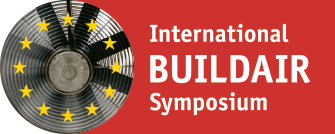Purpose of the work
With the German Energy Savings Regulation EnEV 2014 the legislators have qualified the requirements for large apartment buildings (VL > 1.500 m³). In addition to the air change rate (n50 ≤ 3,0 h-1 or n50 ≤ 1,5 h-1 depending on the ventilation technology used) the envelope-based air permeability (q50 ≤ 2,5 m³h-1m-2) is now also required.
Can we generally expect good quality of execution if these building-specific values are observed? Or do we, as the case arises, have to expect considerable, locally effective leakages resulting in a limitation of comfort, safety, and efficiency?
Legal framework
At the European level, these questions are put or limited in different ways. In Switzerland, the recommendations of SIA or the requirements of the MINERGIE Standard for general individual or sectional measurements primarily focus on safety, while economic aspects are not as important. Other countries content themselves with random controls.
In Germany, the question of methodology remains. On site, many questions are simply decided pragmatically. If KfW-sponsored apartment buildings cannot be tested as a whole according to German and European Industrial Standard DIN EN 13289, it is mandatory to consult with KfW or the German Energy Agency, Dena, on how to proceed.
The cooperation of Jade University of Applied Sciences in Oldenburg, BlowerDoor GmbH in Springe, the Association for Airtightness in Buildings (FLiB) in Berlin, and the energy consulting company, Energieberatung Holtgrave in Osnabrück, facilitated comprehensive and very detailed measurements of a number of larger apartment buildings over the last years.
From the measuring data, you can derive systematic features, individual deviations, and in particular, the wide variation of the building parameters. It has, for example, been empirically proven that apartments at different locations in an apartment building show different leakage flows depending on their percentage of roof area or exterior walls. The number of interior leakages between apartments is also considerable.
Depending on the type of leakage, they can also be in contact with outside air through ducts leading into the basement or via the roof. Despite consistently good results, there were still some apartments whose n50-values did not meet the legal requirements.
The presentation will be concluded by giving some recommendations for a methodical approach, an estimation of the influences of error, and some quick suggestions for further work on standards.
Note
For more information, please contact the reference author at: Andreas.Kaschuba-Holtgrave@t-online.de





